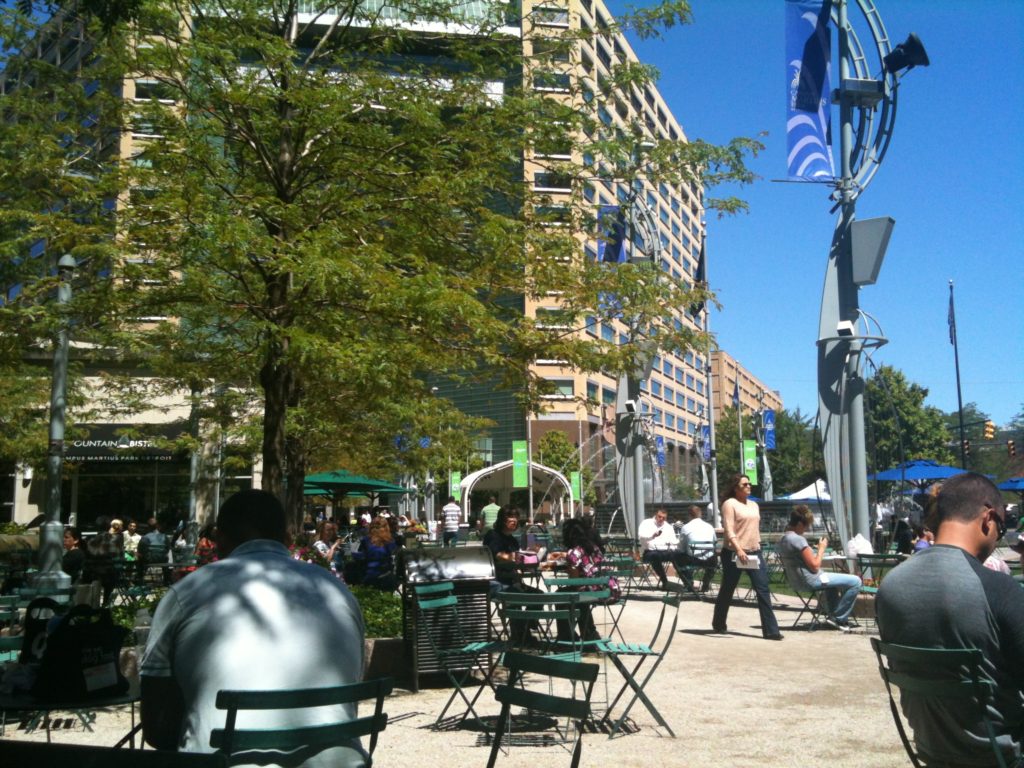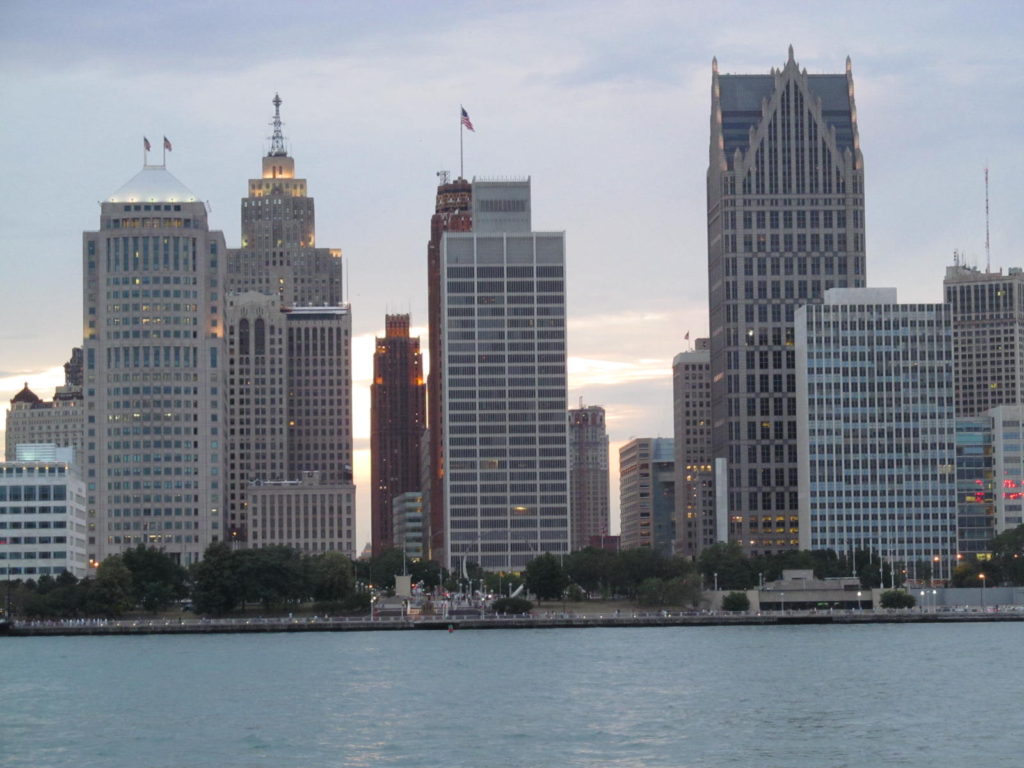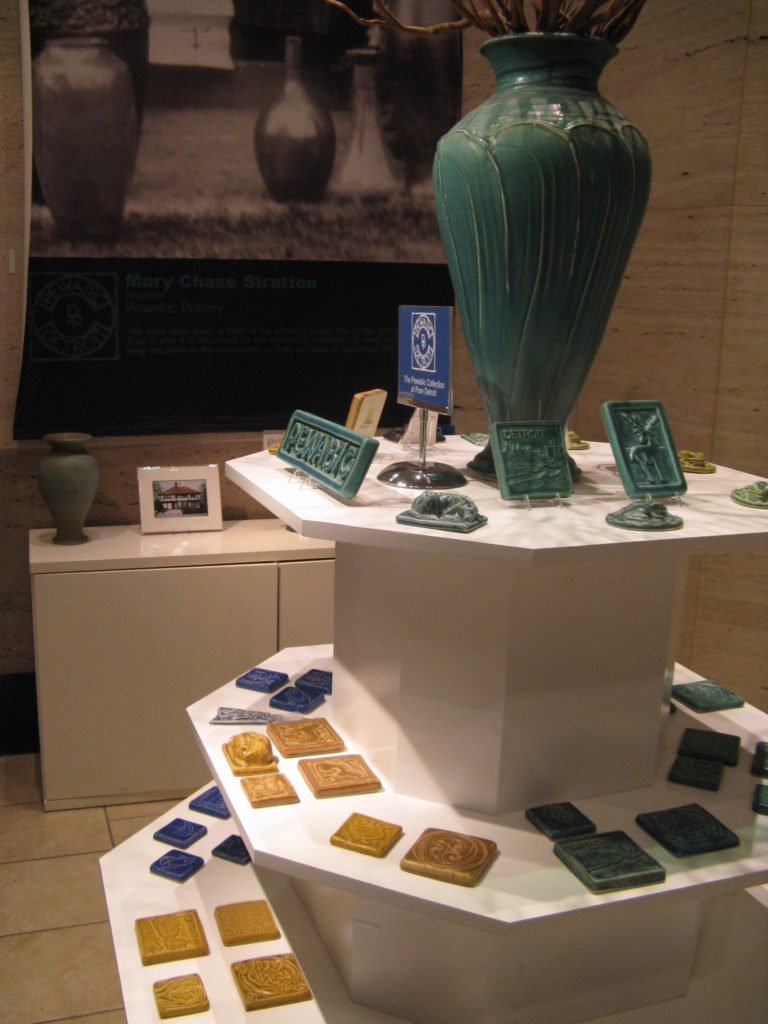In 1806, Judge Woodward created a city plan for Detroit after a significant fire. Over 200 years later, this plan continues to be recognized as a great vision for urban planning. Even though much of the original plan was not realized, what was completed created one of the most interesting and unique downtown plans of any in North America. The vision of the Woodward plan was recently strengthened with the creation of the Campus Martius Park, which was part of the original 1806 plan.

Eliel Saarinen then planned the Detroit riverfront, which lead to a revised plan by his son Eero Saarinen for a riverfront civic center incorporating a city hall, convention center, arena and a large public space. In the late 1950’s, this plan was considered innovative, and architects and planners of the world took note. Much of that plan, in concept, has been implemented as the Cobo Convention Center, Hart Plaza and the City County Building.
Another significant planner, Charles Blessing was internationally known as the head of Detroit City Planning during the 1950’s and 1960’s. He initiated innovative urban designs like Lafayette Park where he brought to Detroit, world-class architect Mies Van Der Rohe to design the project. Blessing also established a unique approach to planning with the integration of multiple hospitals at the Detroit Medical Center and was recognized for his 3-D plans for the entire city, the first of their kind anywhere. The Detroit Planning Department was noted internationally as a forward-thinking group and attracted talented architects and planners who wanted to work for Blessing. Once again, Detroit was studied for innovation, creativity, and the willingness to challenge the norm of the day.
Architecturally, Detroit designers were innovative in the early 20th century as creators of structures that helped to usher in manufacturing expansion. Detroit architect, Albert Kahn designed structures that accommodated the technologies of the time and established a precedent for industrial buildings with his unique use of structure and natural light. These buildings were constructed around the world and created precedents that have inspired architecture to current day. At Cranbrook in the 1950’s, Eero Saarinen was attracting talented designers to his firm from around the world including Cesar Pelli, Kevin Roche, John Dinkeloo and Gunnar Birkerts. In Detroit, his design team created some of the most important architecture of the century, including the St. Louis Gateway Arch, the TWA Kennedy Airport Terminal in New York and Dulles Airport in Washington D.C. Beginning in the 1960’s another Detroit architect, Minoru Yamasaki, was designing significant buildings around the world. Among these projects was the iconic structure of New York’s World Trade Center, which was also designed here in Detroit.

An additional dimension of industrial design in Michigan is the industry leaders of Herman Miller and Steelcase. These two companies are located in Grand Rapids, about a two and a half hour drive west of Detroit. Internationally known for industrial design products, this is another example of creative importance in the area.

Mark Nickita, AIA, CNU, APA, BSArch, BArch, MArch is an architect, urbanist, retail entrepreneur, developer, educator and an elected municipal leader and President of Archive DS in Detroit and Toronto. Mark is the elected Mayor of Birmingham, Michigan and is co-owner of retail establishments in Downtown Detroit, including the Pure Detroit Stores, The Rowland Cafe and Stella International Cafes.
